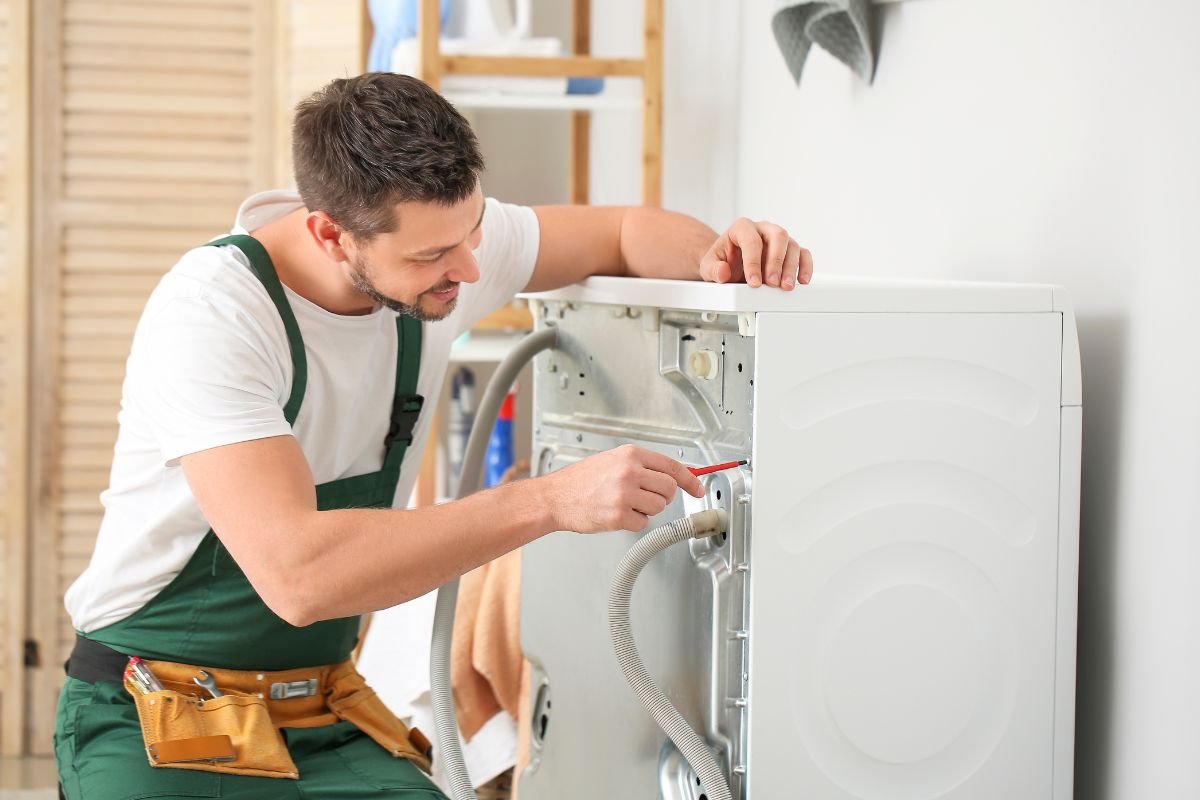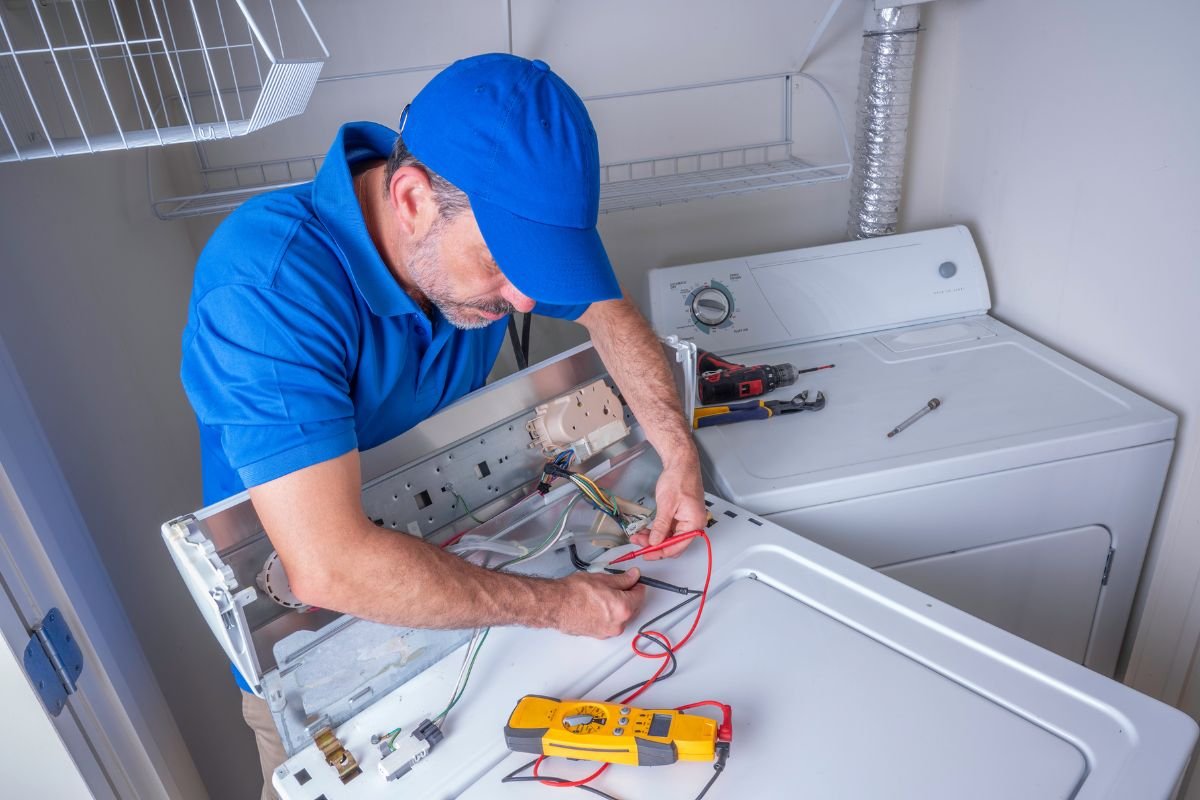
Ever found yourself debating whether to repair or replace something? It’s a common dilemma, whether it’s a cracked phone screen, a malfunctioning washing machine, or even larger equipment like commercial kitchen appliances. The decision isn’t always straightforward—factors like cost, the item’s age, and even environmental impact all come into play. And sometimes, there’s sentimental value attached, making the choice even tougher. If you’re dealing with business equipment, Commercial Appliances Repair Services can help extend the lifespan of your machines, saving you money and reducing waste. This guide will walk you through the key considerations to help you make the best decision.
Key Takeaways
- Repair costs can sometimes sneak up on you with hidden expenses.
- Older items might not be worth fixing depending on their lifespan.
- Repairing can be better for the environment, but not always.
- Think about your budget and if repairs make sense financially.
- Sentimental value can make repair decisions harder, but it’s worth considering.
Understanding the True Cost of Repairs
Factors That Influence Repair Costs
When it comes to repair costs, a lot of things can come into play. Labor charges, the price of replacement parts, and the complexity of the repair itself are just the start. For example, a simple fix like replacing a faucet washer might cost a few bucks, but something more involved, like fixing a car engine, can run into thousands. Knowing what drives the cost can help you plan better. Location also matters—a repair in a big city might cost more than in a smaller town because of higher service fees.
Hidden Expenses to Watch Out For
Repairs often come with sneaky costs. You might think you’re only paying for parts and labor, but there’s more. For instance, you could face inspection fees, delivery charges for parts, or even costs related to downtime if the item is critical, like a broken refrigerator. These hidden costs can add up fast and catch you off guard.
| Hidden Expense | Example |
| Inspection Fees | Diagnostic checks for cars |
| Shipping Costs | Ordering rare replacement parts |
| Downtime Costs | Loss of productivity or convenience |
When Repairs Outweigh Replacement
Sometimes, repairs just don’t make sense. If the cost to fix something is more than half the price of buying a new one, it might be time to consider replacement. Age is another factor—older items are often harder to fix because parts are scarce or discontinued. Plus, newer models might be more energy-efficient or come with better features, making replacement the smarter choice.
Before committing to a repair, take a step back and calculate the total cost, including hidden expenses. It might save you from spending more than you should.
For property owners, deferred maintenance can make matters worse, leading to even higher costs down the line. Addressing issues early can save both time and money.
Repair or Replace? Let’s Find the Right Solution! Save time and money with expert Appliance Repair Services tailored to your needs. Call us today for a consultation!
Evaluating the Lifespan of Your Item
Signs Your Item May Be Beyond Repair
Sometimes, it’s pretty obvious when something’s done for. If your item has major structural damage or no longer performs its basic function, that’s a huge red flag. Another sign? Repairs keep piling up, and each one seems to fix less and cost more. At some point, you have to weigh whether fixing it is even worth the effort.
- Frequent breakdowns, even after repairs
- Replacement parts are hard to find or discontinued
- Repair costs exceed the item’s current value
How Age Impacts Repair Decisions
Age isn’t just a number when it comes to repairs—it’s a big deal. Older items might have sentimental value, but they’re often less efficient and harder to maintain. Plus, as time goes on, technology evolves, and older models might not meet current standards.
| Age of Item | Common Issues | Repair Viability |
| 0-5 years | Minor wear and tear | High |
| 6-10 years | Moderate issues, parts wear out | Moderate |
| 10+ years | Obsolete parts, major deterioration | Low |
Determining the Value of Longevity
It’s easy to get caught up in the now, but think long-term. Ask yourself: Will repairing this item give me a few more years of solid use? Or am I just delaying the inevitable? If the repair extends the item’s life significantly, it might be a smart move. But if it’s just a short-term fix, replacement could be the better option.
Sometimes, the smartest choice isn’t about saving money today—it’s about spending wisely for tomorrow.
When you’re deciding, consider factors like the item’s purpose, how often you use it, and your budget. It’s all about finding that balance between practicality and cost-effectiveness. For a deeper dive into this, check out the useful life of a tangible asset.
Environmental Impacts of Repairing vs. Replacing
The Carbon Footprint of Repairs
When you repair something, you’re often working with existing materials, which means you’re not contributing to the resource-heavy process of manufacturing new items. For example, producing a new appliance can release hundreds of pounds of carbon dioxide into the atmosphere. Repairs, on the other hand, typically involve smaller-scale operations with a fraction of the emissions. Choosing to repair instead of replace can significantly cut down your carbon footprint.
Sustainability Benefits of Repairing
Repairing items helps reduce landfill waste, which is a growing environmental problem. Every gadget or appliance you fix is one less piece of trash sitting in a landfill for decades—or even centuries. Additionally, repairs save the energy and raw materials that would have gone into manufacturing a replacement. Repairing appliances offers a win-win: it extends the life of your device and helps the planet.
When Replacement Is the Greener Option
Sometimes, replacing an old item with a newer, more energy-efficient model can actually be the better choice for the environment. Modern appliances, for example, often consume less electricity or water than their older counterparts. If your current item is a major energy hog, upgrading to a greener option might offset the environmental cost of manufacturing it. However, it’s essential to recycle the old item responsibly to minimize waste.
Financial Considerations in the Repair Decision
Budgeting for Repairs
Before diving into any repair project, it’s smart to figure out how much you’re actually willing—or able—to spend. Start by listing out all potential costs, including labor, parts, and even unexpected fees that might pop up during the process. It’s easy to underestimate how quickly small expenses can add up. For larger repairs, consider breaking your budget into categories, like immediate fixes and optional upgrades. This way, you’re not caught off guard if things go over budget.
Weighing Repair Costs Against Replacement
Sometimes, fixing something is more expensive than replacing it outright. To make the call, compare the repair costs to the price of a new item. Here’s a quick rule of thumb: If repair costs exceed 50% of the replacement cost, it might be time to let go. A simple table can help visualize this:
| Repair Cost (% of Replacement) | Suggested Action |
| Less than 30% | Go ahead with the repair |
| 30%-50% | Think it over |
| Over 50% | Replace it |
Understanding Depreciation and Resale Value
Older items lose value over time, and this is especially true for things like electronics, cars, or appliances. If you’re considering repairs to sell the item later, think about whether the repair will actually increase its resale value. Sometimes, the depreciation is so steep, the repair won’t make much of a difference. On the flip side, if the item has sentimental value or is part of a larger investment (like a house), repairs might still be worth it.
Financial decisions around repairs don’t have to be complicated, but they do need to be thought through. A little planning upfront can save you from costly regrets later.
Don’t Waste Money on Unnecessary Replacements! Our Appliance Repair Services can extend the life of your equipment and keep it running efficiently. Contact us now for expert service!
Emotional and Sentimental Value in Repair Choices
When Sentiment Overrides Practicality
Sometimes, the heart wants what it wants. Even when an item is no longer practical to repair, its sentimental value can outweigh logic. Maybe it’s your grandmother’s clock that’s been in the family for generations, or an old car you’ve shared countless memories in. Emotion often trumps practicality in these cases. You might spend more on repairs than the item is worth because it holds a special place in your life.
Balancing Emotional Value With Costs
It’s tricky to put a price on memories, but you can’t ignore the financial side of things. Ask yourself:
- How much will repairs cost compared to the item’s monetary value?
- Will fixing it restore its functionality, or is it purely sentimental?
- Are there alternative ways to preserve its memory, like repurposing parts of the item?
Creating a balance between emotional attachment and financial practicality can help you make a clearer decision.
Preserving Heirlooms Through Repairs
Family heirlooms often carry not just sentimental value but also a sense of legacy. Repairing these items is about more than just fixing them—it’s about keeping a part of your family’s history alive. For example, restoring an antique chair might not just fix its functionality but also preserve its charm and legacy. If you’re unsure whether to repair or restore, consider the distinction between the two approaches. Repair focuses on functionality and practicality, while restoration emphasizes beauty, charm, and legacy. Both have their place, depending on what you hope to achieve.
The Role of Warranty and Insurance in Repairs
Understanding Warranty Coverage
Warranties are like a safety net for your purchases, offering reassurance when things go wrong. A warranty typically covers repairs or replacements for a set time, protecting you from unexpected costs due to manufacturing defects or failures. It’s important to know exactly what your warranty covers. For instance, does it include parts, labor, or both? And are there any exclusions, like wear-and-tear or accidental damage? For car owners, an auto repair warranty can be a lifesaver, ensuring you’re not left footing the bill for faulty parts or systems.
How Insurance Can Offset Repair Costs
Insurance can step in when warranties fall short, especially for accidents or events outside a warranty’s scope. Depending on your policy, insurance might cover repair costs for damages caused by accidents, natural disasters, or theft. Here’s a quick breakdown of how it works:
- Deductibles: The amount you pay out-of-pocket before insurance kicks in.
- Coverage Limits: The maximum amount your policy will pay for repairs.
- Exclusions: Situations or damages that your policy won’t cover.
Before committing to a repair, check if your insurance policy can help offset the costs. Sometimes, combining warranty and insurance benefits can significantly reduce your expenses.
When to Leverage Extended Warranties
Extended warranties can be a smart move if you’re planning to keep your item for the long haul. These warranties kick in after the standard warranty expires, offering continued coverage. However, they’re not always worth it. Ask yourself:
- How likely is the item to need repairs after the initial warranty period?
- What’s the cost of the extended warranty compared to potential repair expenses?
- Are there better alternatives, like setting aside savings for future repairs?
Extended warranties often make sense for big-ticket items like cars, appliances, or electronics, but always read the fine print first. Some plans might have restrictions that limit their usefulness.
Warranties and insurance aren’t just about saving money—they’re about peace of mind. Knowing you’re covered can make repair decisions a lot less stressful.
DIY Repairs vs. Professional Services
Assessing Your DIY Skills
Before diving into any repair project, take a moment to honestly evaluate your skill level. Are you comfortable with tools? Do you have the patience to follow step-by-step instructions? If you’re unsure, it’s better to start small. Simple tasks like tightening screws or replacing a light bulb can be a good way to test your abilities. But if the repair involves electrical wiring, plumbing, or anything safety-related, you might want to think twice.
Risks of DIY Repairs
DIY repairs can be rewarding, but they come with risks. First, there’s the potential of making the problem worse. For example, trying to fix a leaking pipe without proper sealing supplies could lead to water damage. Second, there’s the risk of injury—handling sharp tools or working with electricity isn’t without danger. Lastly, you might void a warranty by attempting a repair yourself. Always weigh these risks before picking up that wrench.
When to Call in the Experts
Some repairs are just better left to professionals. Here’s a quick list of scenarios where expert help is advisable:
- Complexity: If the repair involves specialized tools or knowledge, like fixing a car engine or repairing a cracked smartphone screen.
- Safety: Anything involving gas lines, electrical systems, or structural integrity should be handled by licensed professionals.
- Cost Efficiency: Sometimes, the cost of buying tools and materials for a one-time repair outweighs the price of hiring a pro.
Trying to fix something beyond your expertise can end up costing more in the long run. Don’t hesitate to call in a professional when the stakes are high.
Technological Obsolescence and Repair Decisions
How Technology Affects Repair Viability
Technology moves fast—sometimes too fast. You might have a perfectly functioning device, but if the software stops getting updates, it can quickly become obsolete. This is especially common with smartphones and laptops. For example, even if you replace a cracked screen or a faulty battery, the device might struggle to run newer apps or software. So, before repairing, ask yourself: will this item still work for what I need it to do? If not, replacement might be the smarter choice.
Upgrading vs. Repairing Older Models
Sometimes, repairing an older model feels like a good idea—until you see the price tag. Repairs can cost almost as much as buying a newer, more advanced version. Here’s a quick comparison to help you decide:
| Option | Cost Range | Benefits |
| Repair | $50 – $300 | Keeps the item functional |
| Upgrade | $200 – $1000+ | New features, better performance |
If the repair cost is more than half the price of an upgrade, it’s worth considering the newer model. Plus, newer tech often comes with better energy efficiency and longer support lifespans.
Future-Proofing Your Repair Choices
When you repair something, think about its future usability. Will it still meet your needs in a year or two? For example, repairing a TV that doesn’t support 4K might not make sense if you’re planning to stream high-resolution content soon. Similarly, fixing a smartphone without 5G capabilities could feel like a waste as networks evolve.
- Check if your repaired item will support upcoming tech standards.
- Consider whether the item’s manufacturer is still providing updates or parts.
- Evaluate how long the repaired item will realistically last.
Sometimes, extending the initial lifespan of products through methods beyond repair can alter consumer perceptions of value, encouraging longer usage.
In the end, balancing repair costs, tech trends, and your future needs is key to making the right call.
Wrapping It Up
So, should you repair it or not? Honestly, it depends. If you’ve got the tools, the time, and a bit of patience, fixing something yourself can be super satisfying. Plus, it might save you some cash. But if it’s a complicated job or you’re just not feeling up to it, there’s no shame in calling in a pro. At the end of the day, it’s about what works best for you and your situation. Just weigh the pros and cons, and you’ll figure it out. Good luck!
Frequently Asked Questions
How do I know if repairing is better than replacing?
If the repair cost is less than half the price of a new item and the item is still in good condition, repairing might be a better choice.
What hidden costs should I look for in repairs?
Hidden costs can include delivery fees, diagnostic charges, or the need for extra parts. Always ask for a full estimate before deciding.
Is it better for the environment to repair or replace?
Repairing is often more eco-friendly because it reduces waste and the need for new materials. However, replacing it with energy-efficient options can sometimes be greener.
How can I decide if an item is too old to repair?
If the item is outdated, has frequent issues, or parts are hard to find, it might be time to replace it instead of repairing.
When should I try to fix something myself?
You can try DIY repairs if the issue is simple and you have the right tools. For complex problems, it’s safer to call a professional.
Does my warranty cover repair costs?
Check your warranty terms. Some cover repairs fully, while others might only cover certain parts or types of damage.
Keep Your Business Running Smoothly! Whether it’s commercial or household appliances, our repair specialists are here to help. Call now for professional Appliance Repair Services!


